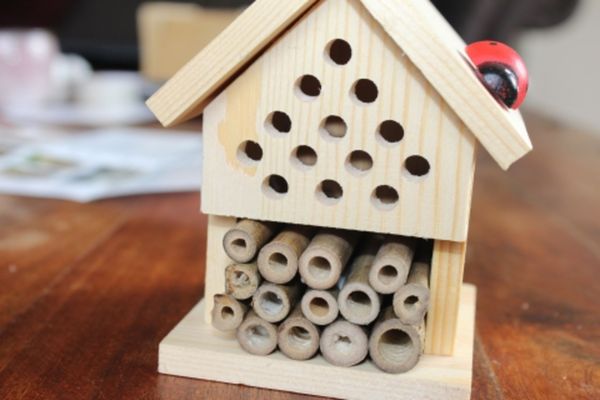Build a wildlife habitat
Build a small backyard wildlife habitat using native plants, fresh water, shelter, and food to attract local birds, insects, and small animals.


Step-by-step guide to build a wildlife habitat
Natural Habitats and Ecosystems - Compilation Video - Science for Kids
Step 1
Pick a safe spot in your yard that gets sun or part shade and is sheltered from strong wind.
Step 2
Spend five quiet minutes watching the spot to see where birds insects or small animals already visit.
Step 3
Bring all your materials to the spot so everything is ready to use.
Step 4
Use your trowel or spoon to loosen the soil or fill your container with potting soil.
Step 5
Make holes for your plants or seeds spaced the distance the seed packet or plant tag suggests.
Step 6
Put each native seedling into a hole or sprinkle seeds into the holes and cover them gently with soil.
Step 7
Water the new plants gently until the soil is moist.
Step 8
Place a shallow dish or birdbath near the plants and fill it with fresh water.
Step 9
Arrange rocks and sticks to create small crevices and hiding spots for insects and small animals.
Step 10
Spread mulch or leaves around the plants to keep soil moist and give insects shelter.
Step 11
Put bird seed on the ground or place fruit pieces in a shallow dish to offer food for wildlife.
Step 12
Check the water dish each morning to see if it needs more fresh water.
Step 13
Share a photo and description of your finished wildlife habitat on DIY.org
Final steps
You're almost there! Complete all the steps, bring your creation to life, post it, and conquer the challenge!

Help!?
What can we use if we don't have a trowel, potting soil, or a shallow birdbath?
Use a sturdy kitchen spoon or small hand fork to loosen soil, fill a clean milk jug, yogurt container, or nursery pot with garden soil mixed with compost as a substitute for potting soil, and use a shallow saucer or lid as the birdbath.
My seeds didn't sprout — what might have gone wrong and how do we fix it?
Check that you made holes at the depth and spacing shown on the seed packet, kept the soil evenly moist (not waterlogged) after planting, and move the container or choose a sunnier or shadier spot as needed while protecting seedlings from strong wind.
How can I adapt this habitat activity for younger or older children?
For toddlers, have an adult do the trowel work and let the child sprinkle seeds, arrange rocks, and refill the water dish each morning, while older kids can measure spacing from plant tags, research native seedlings, and design a planting map before digging.
How can we extend or personalize the wildlife habitat after finishing it?
Enhance the habitat by adding a labeled native-plant sign, rotating different foods like fruit pieces and bird seed, installing a small camera or notebook to record visitors, and sharing photos and observations on DIY.org.
Watch videos on how to build a wildlife habitat
Intro to managing land for wildlife
Facts about wildlife gardening
🐦 Backyard habitats can attract dozens of local bird species across a year when they provide food, water, and shelter.
💧 Even a shallow birdbath or dripper can bring wildlife to your yard; moving water is especially attractive to birds and insects.
🦋 Native plants support many more local insects than non-native species — some native trees host hundreds of caterpillar species that feed baby birds.
🌱 Planting natives usually cuts down on watering and pesticides, helping wildlife thrive while saving time and resources.
🪵 Simple shelters like brush piles, rock piles, nest boxes, and fallen logs give small animals safe places to hide and raise young.
How do we build a small backyard wildlife habitat for kids?
What materials do I need to create a backyard wildlife habitat?
What ages is building a wildlife habitat suitable for?
What are safety tips and precautions when making a backyard wildlife habitat?


One subscription, many ways to play and learn.
Only $6.99 after trial. No credit card required



